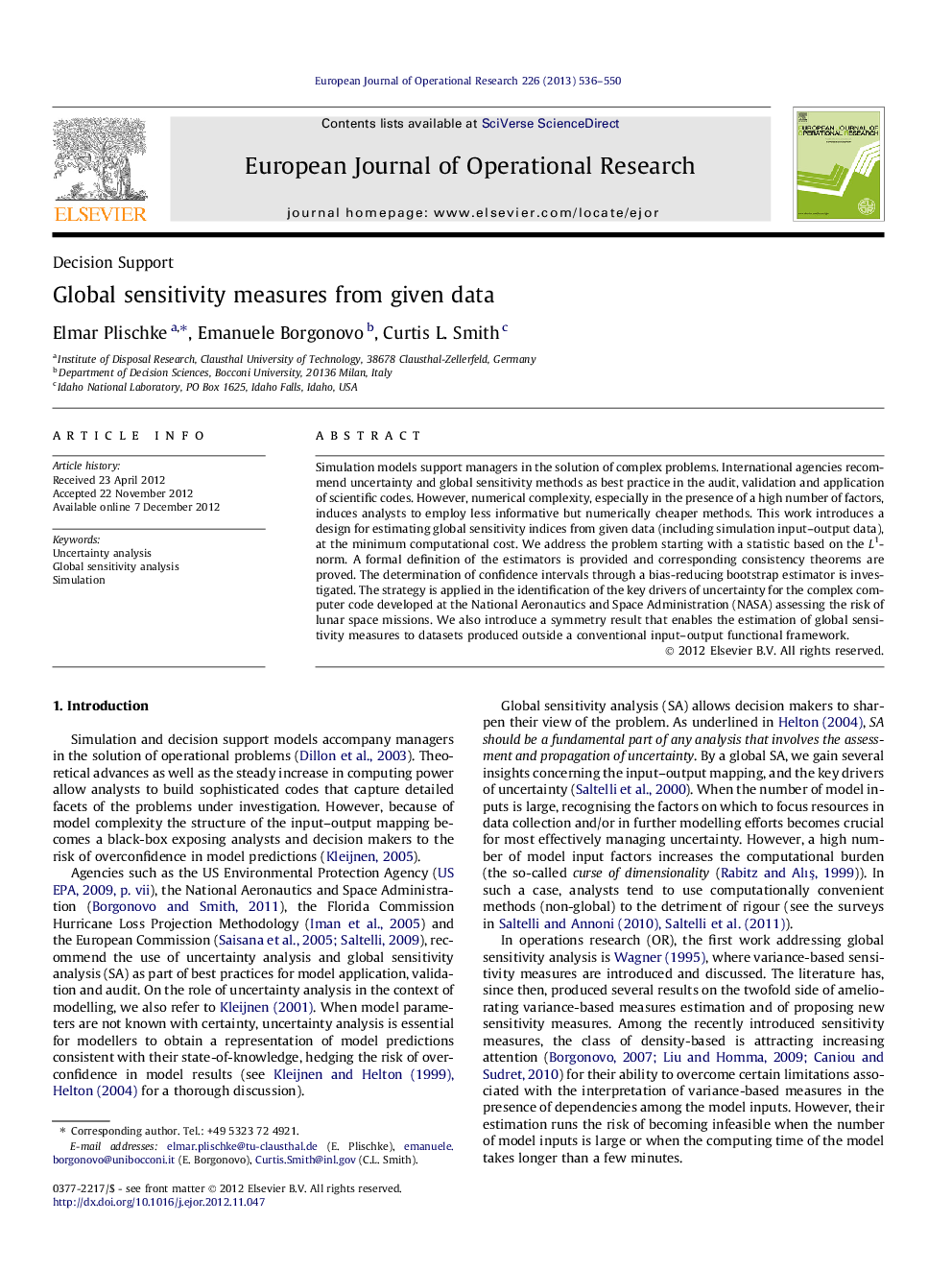| Article ID | Journal | Published Year | Pages | File Type |
|---|---|---|---|---|
| 479970 | European Journal of Operational Research | 2013 | 15 Pages |
Simulation models support managers in the solution of complex problems. International agencies recommend uncertainty and global sensitivity methods as best practice in the audit, validation and application of scientific codes. However, numerical complexity, especially in the presence of a high number of factors, induces analysts to employ less informative but numerically cheaper methods. This work introduces a design for estimating global sensitivity indices from given data (including simulation input–output data), at the minimum computational cost. We address the problem starting with a statistic based on the L1-norm. A formal definition of the estimators is provided and corresponding consistency theorems are proved. The determination of confidence intervals through a bias-reducing bootstrap estimator is investigated. The strategy is applied in the identification of the key drivers of uncertainty for the complex computer code developed at the National Aeronautics and Space Administration (NASA) assessing the risk of lunar space missions. We also introduce a symmetry result that enables the estimation of global sensitivity measures to datasets produced outside a conventional input–output functional framework.
► Density-based sensitivity-indicators are investigated. ► The importance of looking beyond variance-based sensitivity indicators is discussed. ► Methods of estimating density-based indicators from supplied samples are developed, hence enabling bootstrap approaches. ► The findings are demonstrated on analytical models as well as on an 872 factor model for risk assessment of a NASA lunar space mission.
